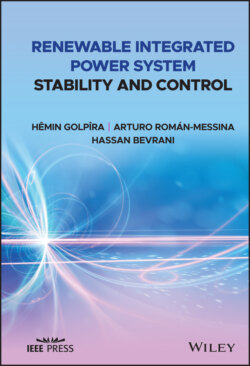Читать книгу Renewable Integrated Power System Stability and Control - Hassan Bevrani - Страница 18
1.2.1 Frequency Control
ОглавлениеPreliminary efforts in the field of power grid frequency regulation are reported in [24]. Subsequently, an IEEE working group prepared some standard definitions of significant terms and concepts on power system frequency control [25]. Considering the physical constraints and to cope with the advances in technologies and the changed system environment, dynamic modeling developments, security constraints, and communication delays, as well as modifications on the frequency control definitions, have been discussed over the years [26–30]. A comprehensive survey and exhaustive bibliography on frequency control up to 2014 are given in [31, 32].
Frequency control analysis, frequency response modeling, nonlinearity and uncertainty presentation, specific applications, frequency bias calculation, control performance standards, load characteristics impacts, and parameters identification are presented in several documents [2932–42]. A Considerable research on the time‐delayed system is contained in [4, 30]. In addition, regarding parametric uncertainty, several self‐tuning, adaptive, and robust control strategies are widely applied for power grid LFC system synthesis over the years [4,43–51].
Dynamic impacts of intermittent DGs and high penetration of RESs on power grids frequency response are discussed in [3252–56]. A low inertia can negatively affect the grid frequency dynamic performance and stability. A number of recent works have suggested the application of inverter‐based virtual inertia emulators to improve frequency stability and frequency response performance [57–61]. Furthermore, numerous research works have been recently focused on the use of DGs, RESs, MGs, electric vehicles, and storage devices to provide frequency control supports in the power grids [62–69]. Providing frequency control support via controllable loads and smart load technologies using the concepts of demand response (DR) is discussed in [41, 42,70–76]. Two recent works in this area are [77, 78], that discuss the impact of a high integration of MGs on the frequency control of power systems, and propose a decentralized stochastic frequency control of MGs.
PMU‐based/data‐driven online tuning frequency control approach is not addressed in the abovementioned worldwide published works. In most cases, the secondary frequency control is designed using conventional frequency response model, which is very difficult to realize in a modern power grid with a highly variable structure and penetration of DGs/RESs.
